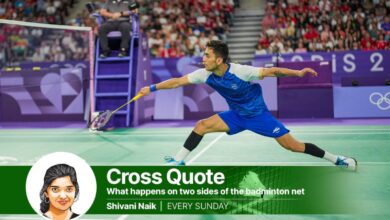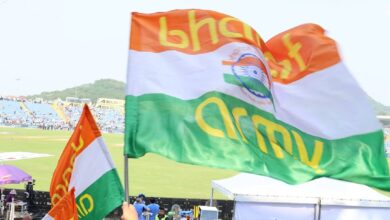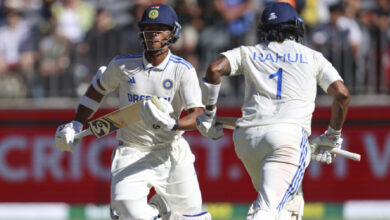Hockey World League Final 2017: India aim to shake off inconsistency under Sjoerd Marijne ahead of Australia clash

Even before taking the field for their first match against reigning champions Australia, Indian captain Manpreet Singh was flustered. It didn’t take much. An innocuous question from a local reporter tied Manpreet into knots where he was asked about the ‘injector’ (player who pushes the ball for the penalty corner) and why does the ‘injector’ push the ball slowly which results in slowing the pace down and thus the penalty corner is rendered virtually useless. Manpreet took a few seconds to understand and asked the reporter to repeat the question.
By then, the ‘injector’ word becomes a question mark and when a third person entered the fray, redefined the question and made Manpreet understand, the Indian captain laughed and then said, “But I don’t remember when the ‘injector’ had pushed the ball slowly.” It was a classic example of further complicating a highly technical sport.
With all its technicalities, skill, speed, a high sense of tactical nous and a chess-like spread with each coach playing general in order to flank and outflank the other, hockey is still a game where one team needs to score more than the other to win at the end of the day.
India coach Sjoerd Marijne hopes that his side brings simplicity to the pitch in their first match and, despite the fact that the opponent standing on the other side of the pitch is Australia, enjoy the moment and ‘play without fear’. Hockey statistician BG Joshi’s numbers tells us the following — Head-to-head: 120 matches; India win: 22; Australia win: 80 Draws: 18.
Yet there is optimism in the air. In Dhaka, during the Asia Cup, after the team had entered the Super 4, Marijne was asked his first impressions of the men’s team. After the standard ‘it’s an ongoing process’ answer, he said, “Mentally, we need to be more stubborn.” In that line was the story of the last few decades where they had won at the Asian level, did well on the European tours and then when confronted with consistent, superior teams, they cracked.
One remembers the Indian team that toured Holland, Germany, England before the 1992 Barcelona Olympics under Balkishen Singh. The team led by Pargat with players like Mukesh Kumar, Dhanraj Pillay, Sanjeev Kumar, Jagbir Singh, Atif Idris virtually destroyed teams before falling apart in Barcelona. Sydney Friskin, writing for the Times London, wrote ‘The Indians have shown us magic again. It’s a team that once again reminds us of how hockey should be played.’
It doesn’t need too much of intelligence to understand skills are a given for India. But what do you do with them is the reason why some teams win, and win consistently. There have been numerous times when India has dominated for lengthy periods but then off a counter-attack, the other team gets a penalty corner and suddenly like a tide turning, you are a goal down. “Those are the moments you train for,” says Marijne.
In Dhaka, India was a goal down to South Korea and for the first time in a couple of years, Korea played like the old teams under Kim Sang Ryul; they dominated, controlled the space between the defence and the midfield and systematically played India out of the match. But in the end, in the last few seconds, India scored. Marijne later said: “The ability to score in a last-minute situation is an encouragement.”
The coach explained the Indian team’s ability to not count the seconds but keep moving ahead, not forgetting that only a goal was needed to draw level. But to just focus on the coach and feel that the man will wave his magic wand and the team will deliver is also underestimating the will and ability of the team. Understandably, the team selected is not banking on experience to charge its youth-fuelled turbines. Sardar Singh is missing from the line-up and Marijne understands the questions that dropping a player who at 31 is not aged but experienced has its own pitfalls.
But there always comes a time to back the coach, and this is one of them. There is no doubt that failure at the Hockey World League (HWL) Final will put the spotlight on Marijne and he understands that part too. Mentorship is another area that Sardar could have contributed and questions do arise that a player of his calibre and control could have been dropped for the less demanding Asia Cup and not the high-intensity HWL.
Yet this is a team where players like Kothajit, Chinglensana and the fast-improving Sumit put in the hours for the forwards to flourish at the top end and also protect the defenders from being outflanked. These are the invisible players who lose out to the flourish of an Akashdeep, the speed of Sunil, robust poaching of Gurjant, the guile of Mandeep and the subtleness of a Lalit.
These players are the layer that give a defensive balance and at the same time initiate counter-attacks from deep lying positions. If India has been exposed, which they could be in the upcoming clash against Australia, it is that gaping space that sometimes opens up in front of the deep defenders; thus a freeman and maybe, Manpreet could float in and out of that space.
Manpreet is not too worried about the absence of a Sardar. “Personally if you see, other players are also doing well. Like Rupinder Pal Singh and Birendra Lakra, all of them are maintaining a good structure.
“Rupinder also has a very good experience. So, I don’t think we are having that much of problem in the Indian team,” added Manpreet. The same sentiments are echoed by Marijne too. “If there is a gap there is always someone else who fills in that gap. And that’s also what’s happening now. And it’s normal, it is in every team. You see it always.”
With the Olympic Champions Argentina in the fray, reigning champions Australia, an immensely strong Holland, a resurgent Spain, Olympic silver medallists Belgium, the structurally sound Germany and mercurial England, India have their task cut out. Eight teams play and also enter the quarter-finals. It’s a design that could be called flawed but also in a sport like hockey, down turns are as common as surges. So if a team is unlucky to lose three games in a row, it can win the HWL by playing three consecutive matches on a high.
In the last HWL in Raipur, India lost their first three matches and then won the bronze medal. Marijne’s argument on ‘mental toughness’ finds resonance here.
“It’s not so difficult,” says Marijne. “I don’t think you ever play matches to not win. You go for every match to win. End of three matches we will see where we are. And then you play the other ones, the other pool. So, that’s how we are doing. We want to play good matches. We want to perform better and better every match. That’s our focus. What the outcome would be, we are not busy with that.”
India has two full backs coming after long lay-offs; especially Lakra. Then you have Dipsan Tirkey and Varun Kumar playing what is their first big international tournament. Nerves are frayed, hands quiver and six counter-attacks in the space of three minutes makes you feel as if you have been through a shredder. It’s in the defence that India will face its big test. India need consistency, a wee bit of luck and the big moments in the match for it to fall on their side if they have ambitions to move up from the sixth spot in the FIH rankings.
Up front, SV Sunil, Akashdeep are the trump cards. Sunil brings in experience and he has constantly shaken up defenders. Akashdeep is the kind of a player who can change the flow of a match with a single tap, a killing pass or a dribble that shifts defences to one side. Gurjant is the pure striker, the poacher. But a lot rides on Mandeep Singh, who made his big tournament debut at the 2014 World Cup. Coming good is one aspect of a sportsperson, but not unleashing that potential is a sin. And then you have Lalit Upadhyay the classic forward — high ball speed, mixing a variety of skills, almost like watching a juggler.
It’s time for the forwards to come good in a big tournament. “If you see the youngsters who have come here, it’s the perfect blend of youth and experience. It’s a very good combination for us. So, we want to give our best against Australia and give 100 percent,” says Manpreet.
Marijne, in fact, shows a kid-like excitement, an eagerness to get things going. “We are looking forward to play this match,” he says.” We worked for a month on this. We know how difficult it will be, the intensity will be high. And we are looking to compete against the No 2 of the World. It’s a challenge and that’s how we see it.”
The captain plays his 200th match. “It was a long journey for me and I am very excited as the match is on my home ground,” says Manpreet. “And there would be a lot of support and we enjoy a lot whenever we play.”
In what could be a kind of warning to India, Australian captain Mark Knowles said: “We love playing the best teams that’s what our Kookabura mentality has been for a long period of time. A coach who is Australian trying to get back after a not good enough standard in Rio and that’s what we have been striving for this year. It doesn’t mean it will happen in one tournament but we know there are a Commonwealth Games and the next World Cup to go next year.”
For the captain and the coach, India’s first match will be all about organisation, structure and focus. However, for Marijne, the bigger issue is the inconsistency that has clung to Indian hockey like a dead spirit. Probably, it’s time to be rid of it.







